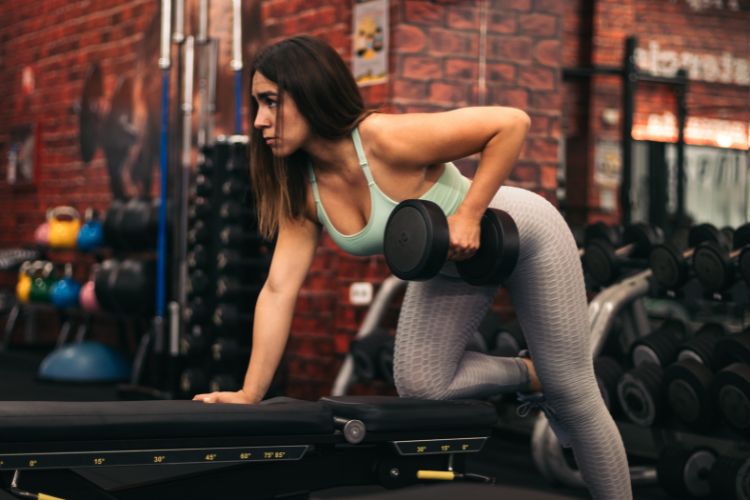Sign up for workout ideas, training advice, reviews of the latest gear and more.




Interval training has become the buzzword in the fitness world, and for good reason. It’s efficient, effective, and adaptable for individuals of all fitness levels. For women looking to optimize their workouts, interval training exercise can be the game changer they’ve been searching for.
Interval training, also known as high-intensity interval training (HIIT), involves alternating short bursts of intense exercise with periods of low-intensity recovery or rest. This can mean sprinting for 30 seconds followed by a minute of walking, or jumping rope intensely for a minute and resting for two. The durations can vary based on personal preference and fitness level.
Efficiency: One of the biggest draws of interval training exercise is how quickly it can be done. Even a short 20-minute HIIT session can burn more calories than a steady-state 60-minute jog.
Boosts Metabolism: Interval training creates an afterburn effect, known as the ‘excess post-exercise oxygen consumption’ (EPOC). This means your body continues to burn calories long after your workout is over.
Interval workouts challenge the heart, helping it grow stronger and increasing one’s cardiovascular capacity.
Maintains Muscle Mass: Unlike long-duration cardio which can sometimes lead to muscle loss, HIIT ensures that most of the weight you lose comes from fat stores.
Adaptable: Whether you’re a beginner or a seasoned athlete, interval training exercise can be adjusted to your level. You control the duration and intensity of both the active and rest intervals.
Jump Rope: A classic that works both the upper and lower body while getting your heart rate up.
Sprinting: Whether it’s on a track or a treadmill, short bursts of running can be immensely effective.
Burpees: This full-body exercise is great for strength and cardio.
Mountain Climbers: Engage your core, shoulders, and legs with this dynamic move.
Kettlebell Swings: This compound move is great for building strength while also improving cardiovascular health.
While interval training exercise has numerous benefits, it’s essential to approach it safely:
Always warm up before starting the high-intensity portions of your workout. This helps to prepare your muscles and reduce the risk of injury.
Listen to your body. If something feels off, or you’re experiencing pain (not to be confused with discomfort), it’s time to take a break.
Ensure you’re maintaining good form throughout, especially when fatigue sets in.
Stay hydrated, and if you’re new to HIIT, consider consulting with a fitness professional to get started.
It’s essential to remember that every woman’s body is different. Factors like age, fitness level, and medical conditions can affect how one should approach interval training exercise:
Active Younger Woman: You might enjoy longer high-intensity intervals with shorter rest periods.
Middle-aged Woman: Emphasis might be on maintaining bone density and muscle mass, incorporating weight-bearing exercises like squats or lunges during high-intensity intervals.
Older Woman: Focus on improving cardiovascular health without stressing the joints. Low-impact exercises like brisk walking intervals or cycling can be ideal.
How Interval Training Reshapes Your Physiology
Interval training exercise is more than just a quick calorie burner; it offers profound changes at the physiological level that can be especially advantageous for women. Let’s dive deeper to understand the science behind it and how it can be tailored further to benefit women across different phases of life.
Hormonal Balance: Interval training has been shown to positively influence hormones that are crucial for women. For instance, HIIT can increase the production of human growth hormone, responsible for cellular growth and regeneration, and which also plays a pivotal role in fat metabolism.
Insulin Sensitivity: Insulin is a hormone that regulates blood sugar levels. Improved insulin sensitivity means your body can better use glucose from the bloodstream, reducing the risk of Type 2 diabetes. Interval training exercise enhances this sensitivity, ensuring glucose is utilized efficiently by muscles rather than being stored as fat.
Mental Health Boost: The endorphins released during a HIIT session can be a real mood enhancer. They act as natural painkillers and can produce feelings of euphoria, which is particularly beneficial for women who may be grappling with mood swings or depression.
Pregnancy and Postpartum: Interval training exercise can still be an option during pregnancy, but it’s essential to make adjustments. Low-impact exercises like swimming or cycling can provide the benefits of HIIT without putting undue strain on the body. Postpartum, HIIT can aid in regaining pre-pregnancy fitness levels, but always consult a doctor before resuming or starting any exercise regimen.
Menopause and Beyond: As women enter menopause, hormonal shifts can lead to loss of bone density and muscle mass. A combination of strength training exercises within the HIIT framework can combat these challenges, promoting stronger bones and preserving muscle tissue.
Incorporate Strength and Resistance: Adding weights or resistance bands can elevate your HIIT workout. This not only intensifies the session but also promotes muscle building, which in turn boosts metabolism.
Mindful Recovery: As essential as the high-intensity intervals are the recovery periods. These allow for lactic acid clearance, reducing muscle soreness and fatigue. It’s during these rest intervals that you should focus on deep breathing, ensuring oxygen reaches those hard-working muscles.
Flexibility and Balance: To make your HIIT routine holistic, incorporate exercises that promote flexibility, like yoga poses or dynamic stretching. This ensures that while you’re building strength and stamina, you’re also enhancing your range of motion and balance.
Motivation Boost: Engaging in group HIIT sessions can offer a motivational boost. The camaraderie and collective energy of a group can push you to perform at your best and remain consistent.
Learning from Peers: Working out in a group provides an opportunity to observe and learn. Maybe someone has better form or a variation of an exercise you haven’t tried. Group sessions can be a goldmine of information.
Accountability: Having a dedicated group or workout buddy can increase accountability. Knowing someone expects you at the gym or park can be the nudge you need on those low-motivation days.
Interval training exercise isn’t just a fleeting trend. Its adaptability across various life stages makes it a viable fitness companion for women throughout their lives. By understanding its deeper benefits and making necessary tweaks, HIIT can be more than just an exercise—it can be a lifestyle. So, whether you’re in your roaring twenties or graceful sixties, know that there’s an interval training routine waiting for you, tailored to your unique needs. Dive in, and let the transformation begin!
Stay up to date on the latest women’s health, fitness and lifestyle trends and tips.